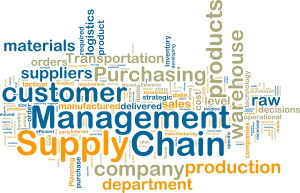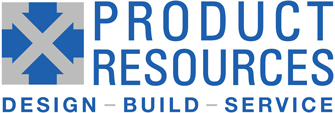How to select a contract manufacturer
A 9-point checklist

When you select a contract manufacturer, you are, in many ways, beginning a partnership.
At the very least, it’s a long-term vendor relationship.
Either way, you are making a commitment that could last for several years. You can’t afford to take this decision lightly.
Here are 9 key areas to consider:
1-Capabilities
One of the first pieces of information you will collect from prospective manufacturers is their list of capabilities.
This will summarize the services they provide and the types of work they do.
This preliminary information will often determine whether a company should be placed on the short list.
As you review their capabilities, ask what will they would do themselves – and what they will outsource.
2-Experience
Experience is most often demonstrated by industry or project type.
Clearly we all want to work with companies that understand our business – and that is more thoroughly revealed during the interview process – but familiarity with your industry is a good first step.
But even within an industry, you will find projects that will vary greatly.
You will also want to look for companies that have produced products similar to your proposed product. Look for components and systems that are common in both.
3-Process
Every candidate is likely to approach the design and manufacturing process a little differently.
Take some time to evaluate their process and see how it matches your own business operations.
Does the process give you enough transparency with sufficient reviews and sign-offs? Will you have opportunities to adjust schedules and budgets, or even change direction if needed?
How often will you be able to assess performance during the process?
4-Personnel
The success of your project will depend largely on the people assigned to your project
On the front lines, you will have the key contact people – the project manager, the project engineer and the manufacturing lead as well as representatives from the technical, compliance and purchasing departments.
But you also have a vested interest in the people on the floor who will be responsible for product assembly, testing and distribution. While you don’t want to be involved in hiring, you should pay close attention to the process used for training and oversight.
5-Equipment/Technology
OEM clients expect their manufacturers to have – or have access to – the equipment and knowledge of technology needed for their projects. That’s one of the reasons they outsource.
In the case of the contract manufacturer, is the equipment current? Have maintenance and calibration schedules been met and documented?
On occasion for a very specific application, new equipment may be needed. Be clear about who’s paying for that? How long will it take for the equipment to be installed and the personnel to be trained?
6-Regulatory Insight
Regulatory compliance is a necessary headache for every product development assignment. It needs to be dealt with directly and early in the process.
Find out what your candidate’s regulatory experience is in the countries you plan to distribute your product. Requirements for health, safety and environmental compliance will vary in the United States, Europe, Canada and other global locations.
Ask about the compliance process and how your product will be introduced to the regulatory agencies.
7-Capacity
In finding the right contract manufacturer, you need to know that the selected company has the bandwidth to handle your project.
Will you be the largest client for this company? Or will you be smallest?
Both extremes could be red flags. If you are the largest client, will this be the first time the company has handled a project of this size? If you are the smallest client, will you get the attention you need?
Does the company have the right amount of physical space for both assembly and storage? Will the personnel be dedicated to your project or will you share personnel with other projects?
8-Location
Where will the work be done? In truth, if the manufacturer is outsourcing some of the sub-components, it may be developed at several locations. So the real question is where the final assembly and testing will take place.
Location is often viewed as domestic vs. offshore which has a whole slew of political, language, shipping and cost ramifications.
But beyond that, location is also a comfort level issue – meaning sometimes you want to be able to visit the manufacturer to see the operation firsthand or to meet face-to-face with your project manager.
9-Financial Stability
When OEM’s do risk assessment analysis on potential contract manufacturers, they are looking for potential disruptions in the manufacturing process.
These disruptions can be caused by a number of factors – unrealistic expectations, equipment failure, inventory mismanagement, subcontractor delays, raw material shortfalls, natural disaster and more.
Of course, the worse scenario is the possibility that the selected manufacturer (or their subcontractors) goes out of business.
Knowing the chosen company and its suppliers are in good financial shape is a must.
———————-
The review process for selecting a contract manufacturer is a long and comprehensive process.
To be sure, this list is just the starting point. But hopefully it gets you started on the right foot.
———————-
Product Resources is a product design and manufacturing company specializing in complex instruments, devices and industrial equipment for scientific, medical and industrial companies.
